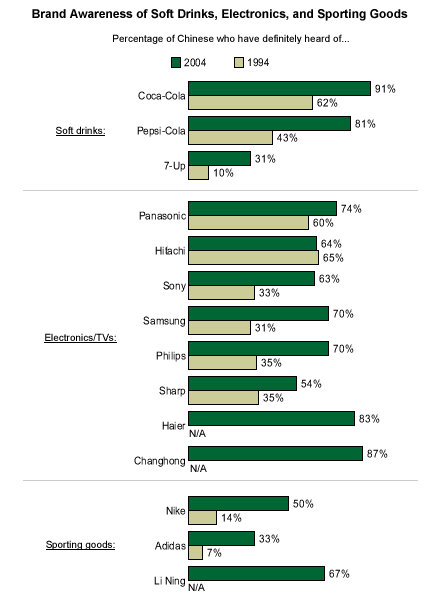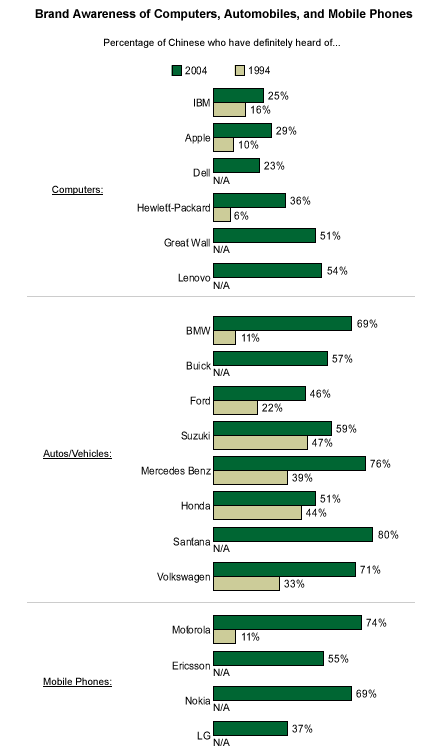China's apparent thirst for consumer goods continues to entice marketers in China and around the globe. Fueled by the overall growth in household income, there have been impressive increases in ownership of products ranging from refrigerators and color televisions to computers and mobile phones. And there's evidence that substantial numbers of Chinese are actively planning to buy even more.
Who will be the winners in the race to meet the needs of this large, ripe consumer market, and who will be the losers? For the past decade, The ║┌┴¤═° Poll of China has been asking Chinese consumers about the brands that come to mind and the names they recognize. An examination of these trends reveals some interesting and occasionally surprising findings.
What's Hot, What's Not
Some brands are rapidly growing in awareness, which is a result of their marketing and advertising investments. But some brands are not growing, despite whatever efforts they've made. In the important and growing home electronics market, for example, Chinese consumers' awareness of Philips has doubled in the past decade, while awareness of Hitachi hasn't grown all. In the emerging auto market, awareness of BMW has increased more than six-fold, far surpassing the relatively slow growth for Suzuki or Ford.
Some world-famous brands have as yet made comparatively few inroads in China. Only 41% of Chinese are aware of Microsoft and, despite huge interest in computers, less than half of Chinese consumers (43%) have ever heard of Intel. Only half (50%) know the name Nike, considerably fewer than those who know the Li Ning sportswear brand (67%).
And yet, some global brands have become almost as familiar to Chinese consumers as their own domestic brands, especially in the larger cities. Almost all of the inhabitants of China's "big three" cities know Tsingtao (96%) beer, but nearly as many know Budweiser (86%). In those same three cities, as many consumers know about Mercedes (93%) as know about Shanghai VW (93%) or Beijing Jeep (85%).
Importantly, some brands that once appeared to dominate all others in their category are now seeing their competitors catch up and even surpass them. Hitachi led the consumer electronics awareness derby in 1994 (with 65% awareness) but a decade later, its awareness has been surpassed by five other brands (ranging from Changhong's 87% to Samsung's 70%).
In categories ranging from fast food to mobile phones, and from autos to televisions, the competitors are many and the race is tight. The battle is on.


Bottom Line
Brand awareness, of course, represents only one stage in the battle for brand dominance. It's a necessary but certainly insufficient condition for buying a brand. There are brands that consumers have heard of but have no interest in trying. Still, awareness remains the important first step on the road to a brand relationship, and it's clear that Chinese consumers are aware that, in every category, there are multiple options. Wherever there is obvious consumer interest, there will be marketing competition. And, as the China data show, that competition is getting stiffer.
